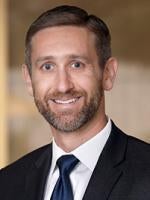A patent must teach one skilled in the relevant art how to make and use the claimed invention, as required by 35 U.S.C. §112(a). The Manual of Patent Examining Procedure (MPEP) 608.01(p) explains that unless an invention is disclosed such that one skilled in the art will be able to practice it without undue experimentation, at least one operative example of the invention must be set forth. On July 1, 2021, the United States Patent and Trademark Office (USPTO) will publish a reminder to patent applicants and patent practitioners that to satisfy the enablement and written description requirement, a patent application must properly present examples in a manner that clearly distinguishes between “prophetic” examples, which describe predicted experimental results, and “working” examples, which report actual experimental results. Failure to do so raises an inequitable conduct issue related to the applicant’s duty of disclosure, as discussed in our related posts here and here.
Prophetic examples, also called paper examples, are typically used in a patent application to describe reasonably expected future or anticipated results. Prophetic examples forecast simulated or predicted results in experiments which have not in fact been performed. In contrast, working examples correspond to work performed or experiments conducted that yielded actual results. To distinguish between these two types of examples, prophetic examples should be written in the present or future tense, and working examples should be written in the past tense
Surprising to some, it is well-established that inventors need not actually reduce their invention to practice and actually test it in order to obtain a patent. Using prophetic examples, inventors may “constructively” reduce their invention to practice and explain how one would or could test the claimed invention. The Federal Circuit has sanctioned the use of prophetic examples to meet patentability requirements, for example, in its 2015 opinion in Allergan, Inc. v. Sandoz Inc.. The courts have gone further and said that the presence of prophetic examples alone should not be the basis for asserting that a specification is not enabling. In fact, a patent application does not need to provide a guarantee that a prophetic example actually works! As explained in the Allegan v Sandoz case, all that is needed is a “sufficient description enabling a person of ordinary skill in the art to carry out an invention.”
Normally, the USPTO does not question the veracity of disclosed results. However, when prophetic examples are described in a manner that is ambiguous or that implies that the results are actual, then the adequacy and accuracy of the disclosure may come into question. If a patent reasonably raises any questions as to whether the results from the examples are actual, the USPTO may reject the application based on an insufficient disclosure under the enablement and/or written description requirements.
The USPTO’s June 30 notice explicitly states that “care should be taken to see that inaccurate or misleading statements, inaccurate evidence, or inaccurate experiments are not introduced into the record.” It also points to the Federal Circuit’s 2003 opinion in Hoffmann-La Roche, Inc. v. Promega Corp., noting that the Court held that “improperly identifying a prophetic example in the past tense validly raises an inequitable conduct issue based on the intent of the inventors in drafting the example in the past tense, when the example, in fact, is prophetic.”
Simply put, proper tense when describing examples must be used so readers can readily distinguish between actual results and predicted results: Working examples should be written in the past tense. Prophetic examples should be written in the present or future tense. However, to ensure complete clarity, one can also explicitly state at the beginning of an example that it is prophetic. Any ambiguities should be addressed during drafting, so a person having ordinary skill in the art reading the disclosure, including those who may not have the level of skill of the inventor, can rely on the disclosure as an accurate description of experiments that support the patent claim coverage. In other words, when drafting a patent application, keep it real.




 />i
/>i
